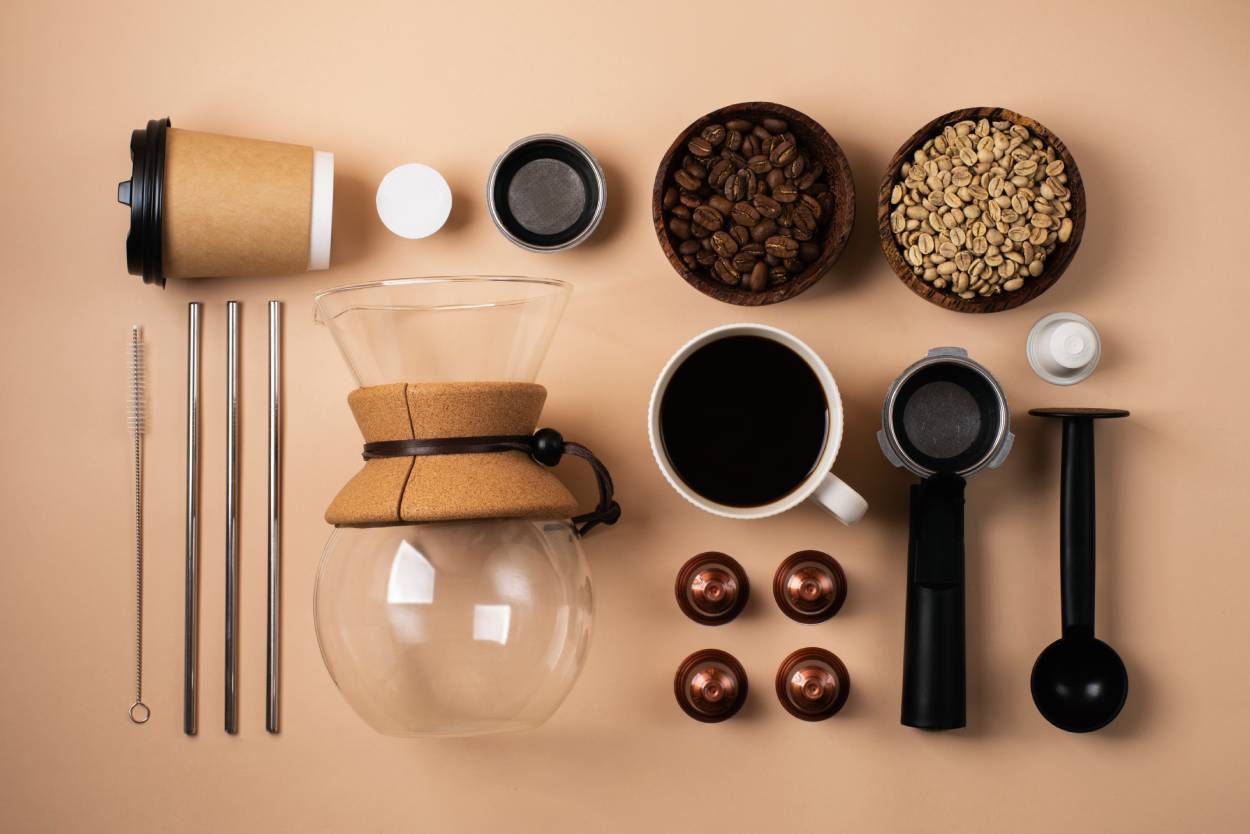
How Climate Change is Affecting the Future of Coffee in the USA
Table of Contents
- 1. The Impact of Rising Temperatures on Coffee Cultivation
- What This Means for the Future
- 2. Changes in Rainfall Patterns: Droughts and Floods
- What This Means for the Future
- 3. The Threat of Pests and Diseases
- What This Means for the Future
- 4. The Shift to More Sustainable Coffee Practices
- What This Means for the Future
- 5. The Role of Innovation in Adapting to Climate Change
- What This Means for the Future
- 6. What Can You Do as a Coffee Consumer?
- What This Means for the Future
- Conclusion
How Climate Change is Affecting the Future of Coffee in the USA
- Adam Smith
- 07-10-2024
- 07-10-2024
- 24516 views
- Coffee Shop

Coffee is more than just a drink; it’s an essential part of daily life for millions of Americans. Whether it’s a morning ritual or an afternoon pick-me-up, coffee is deeply ingrained in American culture. However, like many agricultural products, coffee production is at risk due to the growing threat of climate change. From changing weather patterns to increasing temperatures, climate change is already altering the landscape for coffee farming globally—and the USA is no exception. In this blog, we’ll explore how climate change is impacting coffee in the USA and what the future holds for this beloved beverage.
1. The Impact of Rising Temperatures on Coffee Cultivation
Coffee is a sensitive crop that thrives in specific conditions—generally, it grows best in tropical climates with steady temperatures between 60°F and 70°F. Rising global temperatures due to climate change have started to push coffee-growing regions beyond this ideal range. For coffee farmers in countries like Brazil, Colombia, and Ethiopia, this is already posing serious challenges. But how does this affect coffee in the USA?
While the USA is not a major coffee-growing nation, there are some regions like Hawaii and parts of California where coffee is cultivated. Rising temperatures in these areas can lead to reduced yields and lower quality coffee beans. As temperatures rise, the delicate balance that coffee plants need is disrupted, making it harder to produce coffee beans with the rich flavor profiles consumers expect.
What This Means for the Future
As temperatures continue to increase, coffee farmers in the USA may need to adapt by either shifting production to higher elevations where it is cooler or by adopting heat-tolerant coffee varieties. However, both options come with challenges, including higher production costs and reduced availability of land suitable for coffee cultivation.
2. Changes in Rainfall Patterns: Droughts and Floods
Climate change is also causing more extreme weather events, such as prolonged droughts and heavy rainfall, which have a significant impact on coffee production. Coffee plants require consistent rainfall to thrive, but unpredictable weather patterns make it difficult for farmers to plan their harvests. In regions where coffee is grown in the USA, changing rainfall patterns can disrupt the growth cycle, leading to lower yields and poorer-quality beans.
Droughts can cause coffee plants to wither, reducing the amount of coffee produced, while floods can damage the plants or wash away nutrient-rich topsoil, which is essential for healthy crop growth. Both extremes reduce the resilience of coffee plants and make them more susceptible to diseases and pests, further threatening the coffee supply.
What This Means for the Future
In the coming years, coffee farmers in the USA may need to invest in irrigation systems to combat drought or take measures to protect crops from excessive rainfall. These adaptive strategies could increase the cost of production, potentially leading to higher prices for consumers.
3. The Threat of Pests and Diseases
As temperatures rise, pests and diseases that thrive in warmer climates are becoming more prevalent in coffee-growing regions. One notable example is the coffee leaf rust, a fungal disease that has devastated coffee farms across Central and South America. Warmer temperatures and increased humidity create the perfect environment for this disease to spread, and it has already begun to affect coffee crops in the USA.
In addition to diseases, pests like the coffee berry borer—a small beetle that feeds on coffee cherries—are becoming more widespread as the climate warms. This pest can severely reduce yields and has already been detected in Hawaii, the USA’s main coffee-growing region.
What This Means for the Future
The spread of pests and diseases due to climate change could make coffee farming more difficult and expensive. Farmers may need to rely on chemical treatments or develop disease-resistant coffee varieties, both of which come with additional costs. As a result, we could see a decrease in the availability of premium coffee in the USA and an increase in prices for specialty coffee products.
4. The Shift to More Sustainable Coffee Practices
As climate change continues to affect coffee production, there is a growing push towards more sustainable farming practices. Many coffee farmers are adopting agroforestry methods, which involve growing coffee under the shade of trees. This not only helps to protect coffee plants from the harsh effects of climate change, but it also promotes biodiversity and reduces the carbon footprint of coffee farming.
In the USA, consumers are increasingly seeking out sustainably sourced coffee that is grown in environmentally friendly ways. The demand for organic, fair-trade, and shade-grown coffee is on the rise as people become more conscious of the impact their coffee consumption has on the planet.
What This Means for the Future
Sustainable coffee farming practices could help mitigate some of the impacts of climate change on coffee production. By supporting farmers who use environmentally friendly methods, consumers can help ensure a more stable coffee supply in the future. However, sustainably sourced coffee often comes at a premium, which could lead to higher prices for consumers.
5. The Role of Innovation in Adapting to Climate Change
In the face of climate change, innovation will play a key role in helping coffee farmers adapt. Researchers and farmers alike are working on developing new coffee varieties that are more resistant to heat, drought, and disease. These new varieties could help ensure that coffee can continue to be produced in regions affected by climate change.
In addition to new coffee varieties, technology is being developed to improve coffee farming practices. For example, precision agriculture techniques that use drones, sensors, and AI can help farmers monitor their crops more effectively and make data-driven decisions to optimize production in a changing climate.
What This Means for the Future
Innovation in coffee farming could help mitigate some of the negative effects of climate change, but it will require investment and collaboration between farmers, researchers, and governments. As new technologies and farming practices become more widespread, the coffee industry in the USA could become more resilient to the impacts of climate change.
6. What Can You Do as a Coffee Consumer?
As climate change continues to impact the coffee industry, consumers have an important role to play in supporting sustainable coffee production. By choosing to buy coffee that is ethically sourced and produced in an environmentally friendly way, you can help support farmers who are working to adapt to climate change.
Look for certifications such as Fair Trade, Rainforest Alliance, and USDA Organic when purchasing coffee. These certifications ensure that the coffee you’re buying is produced in ways that are both socially and environmentally responsible. Additionally, consider supporting local coffee roasters and farmers who are committed to sustainable practices.
What This Means for the Future
Consumer demand for sustainable coffee will continue to grow as people become more aware of the impact of climate change on coffee production. By making conscious choices, coffee lovers in the USA can help protect the future of their favorite beverage.
Conclusion
Climate change is posing significant challenges to coffee production worldwide, and the USA is not immune to these effects. From rising temperatures and changing rainfall patterns to the spread of pests and diseases, coffee farmers are facing a host of new difficulties. However, through sustainable farming practices, innovation, and consumer support, there is hope that the coffee industry can adapt to these challenges and continue to thrive.
As consumers, it’s up to us to support sustainable coffee production and make choices that will help ensure the future of coffee in a changing climate. So, the next time you enjoy a cup of coffee, take a moment to appreciate the journey it has taken and consider the impact your choice can have on the world.






















